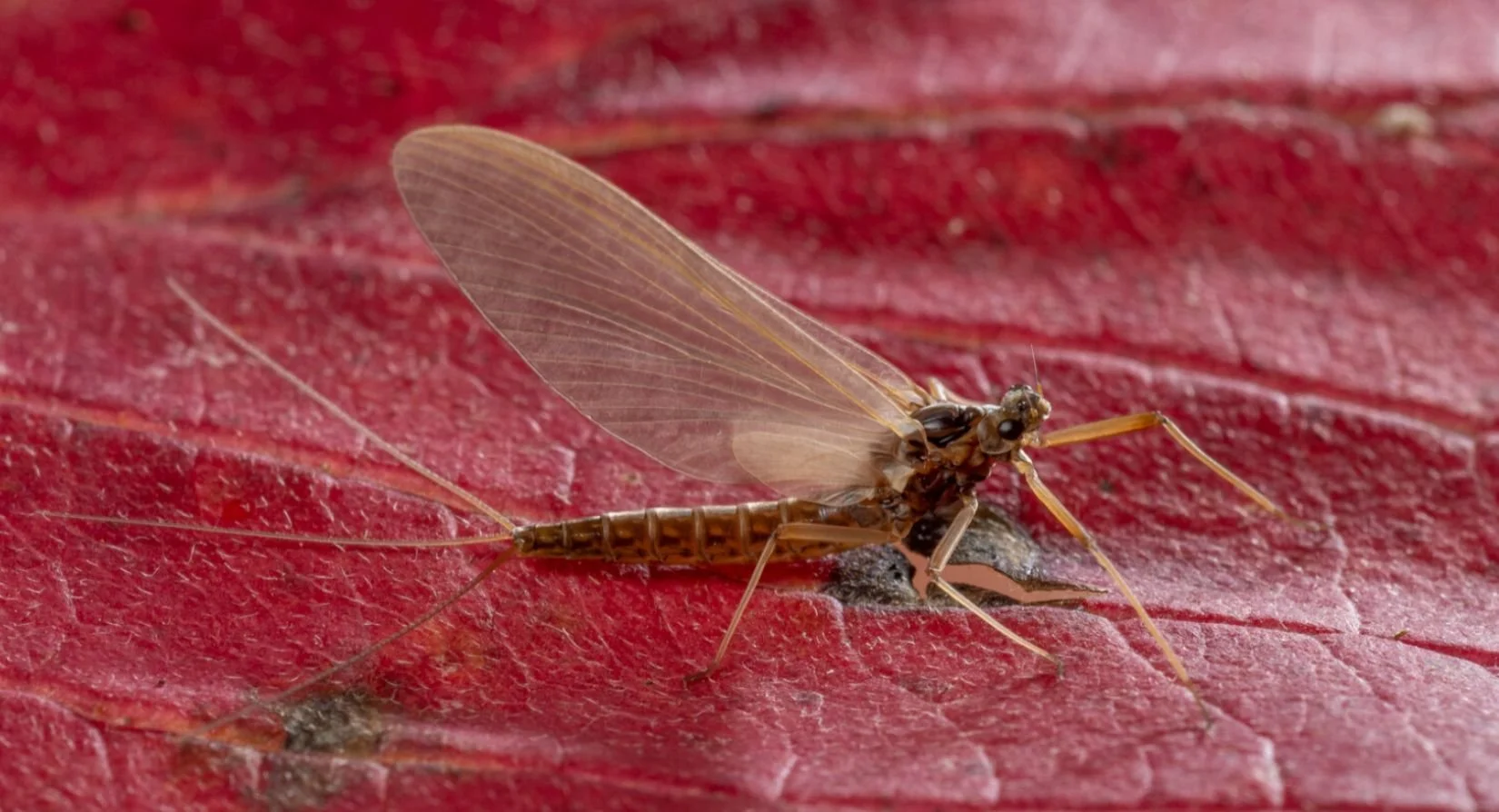Bugged by a Lack of Bugs?
Seldom seen on the Deschutes these days, mayfly Isonychia bicolor. Photo by Rick Hafele.
What’s missing?
The dwindling number of aquatic insects on the lower Deschutes river is troublesome. Fortunately, there’s a solution. Since the advent of the Tower, fourteen years’ worth of observations by guides and frequent Deschutes fishers have been corroborated by good science. In both diversity and abundance, insect life has declined.
Due to nearly year-round increases in water temperatures, hatches generally have started earlier, and waned far too soon. What was once a biologically rich six-month long cycle of caddisfly, mayfly and stonefly hatches has been compressed into an impoverished six weeks. Abundant hatches, rivaling the riot of bug life witnessed prior to the Tower, are now seldom seen on the Deschutes after June 15th. The salmon fly hatch, once the signal for Deschutes anglers to perform an annual June pilgrimage, now complicates plans for Mother’s Day brunch.
Dirtier water is also reducing insect species diversity. An infestation of stalk diatom algae interrupts the life cycle of any bug that relies on clean rocks on which to crawl, as well as algae bugs can eat. (stalk diatom is not edible to most aquatic insects.)
Significantly reduced in volume are the vast swarms of caddisflies that hop-hovered in their spinner phase around and above all manner of riverside foliage. Gone almost entirely are mahogany duns. Reduced to anemic numbers are pale evening duns and golden stones.
The absence of bugs ripples through the web of life on the lower river. Gone now too are the flocks of swallows that numbered in the thousands. Nighthawks, orioles, warblers and other migratory songbirds are less frequently observed. But there’s no reason to get cynical.
The Tower Isn’t Working. Let’s Fix That.
“Night Blend,” would address the needs of bugs and the other creatures who depend on them. It’s the opposite of what we have now–eight months a year, the flow of the lower Deschutes is 100 percent dirty surface water. That’s not working.
Night Blend would put the maximum amount of cold clean water from the depths of Lake Billy Chinook into the lower Deschutes river nine months out of the year. The three month exception would occur from mid-March to mid-June, when surface water would be spilled at night to attract out-migrating juvenile salmon and steelhead to the collection facility in the forebay of the reservoir, adjacent to Round Butte Dam.
PGE claims it costs them nothing to alter the blend of surface and deep water with the Selective Water Wwithdrawal Ttower. So let’s get to it. The certainty you have that your favorite dry fly pattern will raise a trout on a sunny afternoon this spring should apply as well to steering PGE into managing the lower Deschutes for maximum good health. We should expect nothing less.

